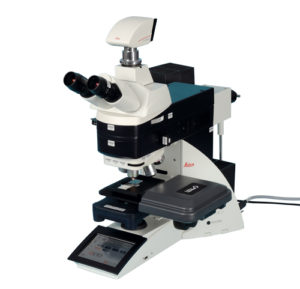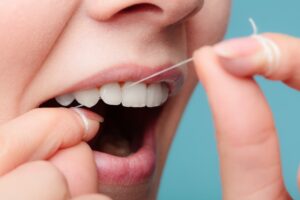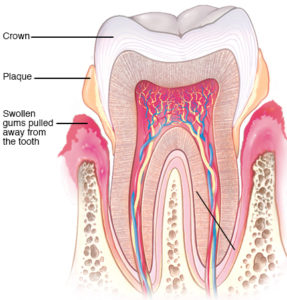Header logo
header top contact widget
dental specialist
April Is National Oral Cancer Awareness Month
Posted on Mar 25, 2021 by William J. Claiborne, DDS MS
Every person fears hearing the “C” word. A diagnosis of cancer, whether a diagnosis of oneself or of a loved one, invokes a dread of lengthy treatment, years of subsequent health concerns, or even death.
Over the years, breast, colon and skin cancers have received more publicity, which supports the importance of periodic screenings. As a periodontist, PLEASE add another screening to your annual must-do list.
The month of April is designated as national Oral Cancer Awareness month.
Oral Cancer is one of the most deadly of all cancers with one of the worst survival rates. Like pancreatic cancer, oral cancer can remain hidden, which allows it progress long before obvious symptoms emerge.
Once symptoms do appear, oral cancer can be difficult to battle. Treatment is often disfiguring. Sadly, every hour of every day, an American succumbs to oral cancer.
According to the National Cancer Institute Survey, there has been a 15 percent increase in oral cancer rates over the past three decades.
Adult males are at the highest risk for oral cancer, with black males being the most susceptible. The risk also increases with age, especially after age 50. Although the risk typically peaks between the ages of 60 – 70, males between ages 50 – 59 tend to have the highest numbers.
It is important to be aware of the warning signs of oral cancer, including:
• A sore, irritation, lump or thick patch in the mouth, lip, or throat
• White or red patch inside the mouth
• Feeling something is stuck in the throat
• Difficulty chewing or swallowing
• Difficulty moving the jaw or tongue
• Numbness in the tongue or other areas of the mouth
• Unexplained swelling of the jaw
• Pain in an ear without hearing loss
While these symptoms do not always indicate oral cancer, any that do not clear up on their own within 2 weeks should be examined without delay.
As mentioned prior, these symptoms may indicate the presence of oral cancer that is well underway. As with any cancer, periodic screenings are helpful in catching oral cancer in early stages. This is generally part of annual oral health exams conducted by your dentist.
Unfortunately, many people assume “if it doesn’t hurt, then nothing is wrong.” This, I believe, is one of the reasons our nation has such high levels of periodontal (gum) disease and subsequent adult tooth loss. And, as rising oral cancer statistics show, the casual attitude toward dental exams can lead to far worse than losing teeth.
The Centers Of Disease Control & Prevention (CDC) reports that only 62 percent of adults between the ages 18 – 64 have a dental check-up each year. This means that over one-third of adults are going unscreened. If the key component in catching oral cancer early lies in the hands of a dentist, until the patient is in the dental chair, the challenge will continue.
This dental exam is painless. Many patients, if not told, are not aware that the dentist is performing it. During this, the dentist does a visual examination of oral tissues, checking the lips and inside of the mouth (including under the tongue). The dentist will also check the roof and floor of your mouth.
If suspicious areas are noted during the exam, the dentist will order a biopsy. In this, a small sample of tissue from the area of concern is removed and examined under a microscope. This will determine whether further tests are needed.
Added to oral cancer concerns over the past couple of decades are rising numbers in younger age groups is the sexually transmitted human papillomavirus (HPV).
The CDC reports that HPV is now the most common sexually transmitted infection. HPV is so common that nearly all sexually active men and women get it at some point in their lives.
There are different types of HPV, some that cause genital warts and others that cause cancers. It is spread through vaginal, anal or oral sex with someone infected with the virus and can be passed even without signs or symptoms. And, symptoms may not appear until years after having sex with an infected person.
A periodontal specialist has extensive training in the treatment of the soft tissues in the mouth. In addition to treating all stages of gum disease, a periodontist is your first call when any unusual symptom in the mouth arise. This dental specialist is your first step in protecting your smile and adding to a healthy YOU.
If you have not seen a dentist on a regular basis or have noticed any of the symptoms associated with oral cancer, act promptly. Call our Asheville periodontal dental office for an examination appointment: 828-274-9440
Flossing – A Valuable Step In Avoiding Gum Disease & Tooth Loss
Posted on Mar 17, 2021 by William J. Claiborne, DDS MS
Adults who wish to stay healthy and active as they age often workout daily, walk at least 30 minutes per day, try to get 7 – 8 hours of sleep each night, and brush their teeth twice a day.
Tooth brushing helps to keep oral bacteria levels in the mouth to manageable levels. With the help of saliva, which is a rinsing agent for the mouth, these bacteria are generally kept under control. By preventing rampant growth, the ‘oral cavity’ (interior of the mouth) is able to avoid a destructive onslaught caused by these icky organisms.
A study shared by Dental Dental showed that about 70 percent of American adults brush their teeth twice a day. Unfortunately, this leaves more than a fourth of adults who do not.
Daily flossing is also recommended by the American Dental Association (ADA) as a preventative way to keep cavities and gum disease at bay. Still, an estimated 30 percent are committed to daily flossing – less than a third.
This means that a whopping 70 percent do not include flossing in their daily oral hygiene regimens. Too, about a third of Americans admit to never flossing, with 39 percent of men and 27 percent of women who do not.
Yet, the devotion of twice daily brushing and daily flossing requires only about 5 minutes of time – total. It is recommended to spend two minutes brushing teeth in the morning and before bed. A practiced flosser requires about a minute to floss. (Consider that five minutes is about the amount of time for a commercial break between TV programs.)
Yet, if you could see what I see…
As a periodontist, my specialty includes advanced training in the treatment of gum disease. I know the destructive nature of infectious oral bacteria. I have a bird’s eye view of what can occur without a committed oral hygiene routine at home. When an overload of bacteria accumulate in the mouth, cavities are able to form and gum tissues become food for living and breeding bacteria.
While brushing twice a day is important, the bristles of a toothbrush are typically unable to dislodge food particles caught between teeth. Left behind, these particles begin to rot rather quickly, leaving even more sustenance for bacterial growth and reproduction.
To see just how much your toothbrush misses, brush your teeth thoroughly for the recommended two minutes at the end of the day. Rinse and spit a couple of times. Then, using a strand of floss, move gently between teeth, easing up and down to reach the sides of all teeth. Move the floss just slightly beneath the gums at the base of each tooth. After all teeth are flossed, rinse and spit again. Most people are shocked at just how much their toothbrush failed to remove.
When oral bacteria amass past the point that is manageable by the immune system, these bacteria become infectious. This causes inflammation in the gum tissues, which can lead to the formation of periodontal (gum) disease. This begins with gingivitis, which has mild symptoms. Untreated, it worsens to periodontal disease and the advanced level of periodontitis.
It begins when oral bacteria accumulation creates a sticky film in the mouth known as plaque. When not removed thoroughly and frequently, plaque can form cement-hard bacteria colonies that attach to teeth. This hardened form of bacteria is known as tartar and, once formed, can no longer be brushed or flossed away.
As a Periodontist, I often see people who have developed periodontal disease who come (or have been referred) because they have obvious symptoms, such as red, swollen gums. However, I also see patients who are surprised to learn they have developed the disease. Yet, even without obvious symptoms, gum disease may exist and be fully underway.
Nearly half of American adults have some level of gum disease (over 47 percent in recent estimates). Periodontal (gum) disease is the nation’s leading cause of adult tooth loss even though it’s one of the most preventable of all diseases with simple measures.
Losing natural teeth leaves an individual with having to make decisions for replacement – crown-&-bridge combination, partial denture, full denture or Dental Implant. These time-consuming procedures and expenses can be avoided. And, contrary to what many believe, losing teeth is not a natural part of the aging process. With proper care, you can easily enjoy a smile of natural teeth all your life.
It is often surprising to people to learn that oral health is an integral part of overall health. Inflammation in the mouth doesn’t simply remain in the mouth. Through tears in diseased gum tissues, the oral bacteria of gum disease are able to enter the bloodstream. As the bacteria travel throughout the body, their toxic nature can activate inflammatory effects elsewhere.
Infectious gum disease bacteria have been the focus of a numerous amount of research over the years. Studies have found that the bacteria of gum disease can trigger or worsen heart disease, stroke, preterm babies, arthritis, diabetes, some cancers, Alzheimer’s disease, erectile dysfunction (ED) and impotency. As research continues, even more serious (and deadly) connections are being made.
They key is to keep oral bacteria levels to a minimum, which is why brushing and flossing are an important part of your daily care routine. Neither step should be taken for granted. Yet, as a periodontal specialist, I understand how it can be difficult to get into the habit of daily flossing.
For some, the tight floss around fingers is uncomfortable. For others who have large fingers or problems with manual dexterity, the act of flossing is awkward or challenging. However, for those who floss on a daily basis, it becomes a maneuver that is as simple as brushing teeth.
For individuals who are challenged by manual flossing, there are some excellent water flossers on the market. These are affordable and can be just as effective as ‘string’ flossing when used properly – and daily.
Twice daily brushing (at least two minutes per time), daily flossing, drinking ample water and limiting sweets and caffeine are simple ways to keep your mouth healthy between regular dental check-ups and cleanings. And, those 6-month check-ups are important. During these visits, tartar that may have formed can be removed and signs of early gum disease can be addressed.
If you are experiencing symptoms of gum disease, call 828-274-9440. In our state-of-the-art Asheville periodontal dental office, our patients are treated with respect, compassion and a gentle touch. Here, you’ll never be lectured. Our goal is to restore your smile to a healthy state and develop a program to help you keep it at its best.
New patients are always welcome. A referral is not needed to become a patient.
Bad Breath – The “Body Odor” of the Mouth.
Posted on Mar 09, 2021 by William J. Claiborne, DDS MS
“Whoa!!!”
That may be our unspoken reaction when we encounter someone who’s breath odor reeks. And, we’ve all encountered it. It tends to leave a rather negative impression of the individual; one that ‘sticks’ with us every time we see him or her in the future.
Occasionally, I like to address the causes of bad breath since, at one time or another, it’s an issue for us all. Bad breath, like body odor, leaves an undesirable imprint.
Although some health conditions can be the source of bad breath, it most commonly occurs due to an overload of oral bacteria. Too many bacteria in the mouth create an odor — a sulfuric, putrid odor.
Bacteria are living organisms that eat, reproduce and emit waste. Their ability to reproduce is astounding, resulting in a consistently growing number of waste-producing creatures.
Poor oral hygiene is the most common cause for bad breath. Not brushing and flossing or doing so adequately allows oral bacteria to reproduce, which leads to plaque.
Plaque is the sticky film you feel on teeth when you’ve missed brushing or when you wake up. When not removed thoroughly on a daily basis, plaque turns into a cement-hard substance known as tartar. This mass is actually a solid colony of oral bacteria that attaches to teeth. In this form, it cannot be brushed or flossed away.
 Tartar attacks enamel and gum tissues. As bacteria multiplies, it causes the gum tissues to become inflamed. This inflammation can quickly develop into gingivitis, an early form of gum disease. If not resolved fully, however, gingivitis can lead to full-blown periodontal (gum) disease.
Tartar attacks enamel and gum tissues. As bacteria multiplies, it causes the gum tissues to become inflamed. This inflammation can quickly develop into gingivitis, an early form of gum disease. If not resolved fully, however, gingivitis can lead to full-blown periodontal (gum) disease.
Occasional bad breath is a nuisance but can generally be controlled with good oral hygiene, keeping our mouth moist and limiting sugar. Things like drinking sugary colas and a diet of high carbohydrate foods rev up bacteria reproduction even more, boosting their ability to grow and thrive.
However, frequent bad breath is not only embarrassing, it is a warning sign.
As one of the symptoms of periodontal (gum) disease, persistent bad breath may be accompanied by tender gums that bleed easily when brushing or tender, swollen areas around some teeth.
As gum disease advances, symptoms include gums that turn red in color and become sore, swollen and bleed easily when brushing. As it worsens, bad breath becomes persistent. Pus-filled pockets may develop near the base of some teeth. Eventually, teeth may loosen and require removal.
While what we consume can greatly contribute to the ability of these icky organisms’ ability to reproduce, a common one is having a dry mouth. This condition is known as xerostomia (zeer-o-STOE-me-uh).
Good saliva flow helps to keep bacteria moving out of the mouth. However, when brushing is infrequent or the mouth becomes dry, saliva is less able to manage the bacteria levels in the mouth.
A dry mouth may seem less likely to be a breeding ground for bacteria since they typically thrive in environments that are warm, moist, and dark. However, when saliva flow is unable to efficiently cleanse bacteria buildup from the mouth, they are easily able to reproduce.
Having ‘dry mouth’ is rather common today. In addition to a part of the aging process, a number of common medications (including anti-depressants, decongestants, and anti-histamines) have a side effect of oral dryness.
Too, many beverages contribute to having a dry mouth. These include colas, coffee, tea, and those containing alcohol. (Please note that colas are acidic and most contain caffeine. These are anything but ‘refreshing’, doing very little to hydrate the body. Stick to plain water to quench your thirst and add moisture to the body.)
Another way that oral bacteria can run rampant has to do with our oral hygiene routines. To be truly thorough in cleaning tooth surfaces, it is recommended to spend two minutes per brushing, twice a day (whether manual or electronic).
It is estimated that nearly a third of American adults brush their teeth for an insufficient amount of time. Even worse, about that same amount fail to brush twice a day. This means that an alarming amount of bacteria remain to grow and thrive in the mouth.
Proper brushing and flossing is necessary. Brush for at least two minutes twice daily and swish thoroughly. Use a circular motion rather than scrub teeth back and forth to avoid damaging tender gum tissues. Never use a hard bristle tooth brush or brush with harsh substances such as baking soda! These can wear down tooth enamel and wear away precious gum tissue.
You may be surprised to learn that brushing only tackles about half the amount of bacteria in the mouth, leaving a tremendous amount that continue to grow and thrive. The tongue actually harbors 58 – 65 percent of the bacteria in the ‘oral cavity’.
Oral bacteria love to take up housing in the tiny bumps and grooves of the tongue since they are not easily dislodged. Thus, it’s necessary that tongue cleaning be a part of your oral hygiene regimen at home to keep bacteria levels under control.
Some toothbrushes have a “tongue scraper” on the reverse side of the bristles that’s an effective option. Or, you can brush your tongue with the bristles after your teeth are brushed. Be sure to reach towards the back of the tongue where the majority of bacteria exist.
An advantage of achieving and maintaining a clean, healthy mouth is being confident when close to others. Plus, you’ll be contributing to the health and well-being of your entire body. Research has shown that a healthy mouth is a supportive component of a healthy you!
If you are experiencing symptoms of gum disease or concerned your breath is frequently bad, call 828-274-9440. We’ll arrange a periodontal exam in our comfortable Asheville periodontal office.
Here, we are committed to the comfort of each patient as well as those who have avoided dental care in the past due to fear. Dental fear is common, and we have a reputation for a gentle touch and respectful care. We also make oral and IV sedation (twilight sleep) available.
Let’s help you establish a healthy smile and feel confident in closeness!
Smokers CAN Lower Oral Health Risks With Proper Measures
Posted on Feb 04, 2021 by William J. Claiborne, DDS MS
If you smoke, you may be tempted to quit as one of your New Year’s resolutions. By now, you may be “over the hump” and feel success in this challenge (and breathing much easier!). Good for you!
However, if you’ve stumbled and faltered (and perhaps even thrown up your hands in defeat), you are not alone. According to the Centers for Disease Control & Prevention (CDC), over 55 percent of smokers in the U.S. had made a quit attempt in 2018, with only 7.5 percent succeeding. (https://www.cdc.gov/tobacco/data_statistics/fact_sheets/cessation/smoking-cessation-fast-facts/index.html)
Yet, less than 7 percent of adult smokers reported (in 2015) that they had sought counseling or medications in their attempts to quit. Yet, the need for support is clear. For most people who are trying to quit, it is a long, tough journey. The CDC also reports that:
“more people in the United States are addicted to nicotine than to any other drug. Research suggests that nicotine may be as addictive as heroin, cocaine, or alcohol.”
As the need to maintain healthy immune systems has never been more urgent, smokers will hopefully reach out to every source in order to kick the habit, for good. Data assembled by a team at the University of California (San Francisco) found that smoking nearly doubles the rate of COVID progression.
The analysis took into account over 11,500 COVID patients. The findings showed by current and former smokers were twice as likely to have conditions that require hospitalization and higher death rates. (https://www.ucsf.edu/news/2020/05/417411/smoking-nearly-doubles-rate-covid-19-progression)
The authors of the study warned that both cigarettes and e-cigs were involved in this higher risk rate.
Smoking increases mucus production and inflammation, which injures the lungs’ defense system. This is why people who smoke are more likely to have serious respiratory infections and illnesses.
However, my role as an Asheville periodontist is not to lecture our patients. We believe our patients deserve to be informed about the risks to their oral health, in particular, and provide encouragement. Too, we want patients to understand the best ways to avoid developing periodontal (gum) disease and the subsequent repercussions (such as tooth loss) as a result.
So, let’s focus on your periodontal health if you smoke (including cigarette smoking or vaping).
Smokers are often unaware of what occurs in the mouth from smoking. To begin, smokers have a greater risk of periodontal (gum) disease due to its drying effect on the soft tissues in the mouth. When saliva flow is depleted, its ability to rinse away oral bacteria enables the mouth to a bacterial breeding ground.
As oral bacteria reproduce and accumulate in the mouth, gum tissues become inflamed. In the early stages of gum disease, symptoms may include frequent bad breath, tender and swollen gums, and gums that bleed easily when brushing teeth.
As gum disease progresses, the gums change in color from a healthy pink hue to red. The gums loosen their grip around the base of teeth and seem more spongy. Breath odor is consistently bad. Pus pockets may form at the base of some teeth.
Eventually, the bone and the tissue structures that support natural teeth are under attack. The infectious bacteria ramp up their onslaught of attack, tooth roots no longer have the firm support they need. Some teeth begin to loosen and may require removal.
Advanced periodontal disease, known as periodontitis, is a health risk that goes far beyond the mouth. For years, research has shown an intricate connection between the “good” bacteria in the mouth, especially beneficial in gut health. It has also been known that the “bad” and infectious bacteria of advanced gum disease can alter the roles of certain factors in the body that help to prevent the formation of disease.
For example, certain cancers can be activated or progressed through the inflammatory bacteria of gum disease. These bacteria are able to become blood borne and activate “pathogens” that create a domino effect of disease development.
When you factor in the vulnerability to the lungs from inhaling the toxic smoke of cigarettes, you have a perfect storm. Consider that the gum tissues are the first contact with these inhaled chemicals. Because oral tissues are absorbent in nature, they are at the front line of smoking’s effect.
If you do smoke, we want to help you minimize the risks it poses to your oral health. In addition to maintaining regular dental check-ups and cleanings (at least every 6 months), below are some tips for your at-home oral hygiene regimen.

• Brush twice a day (at least) for two minutes each time. Use a fluoridated toothpaste and a soft to medium bristle toothbrush.
• Floss your teeth every day and floss before your brush. You would be surprised at how many particles can be lodged between teeth that brushing won’t rid. If flossing is an awkward maneuver, try one of the water flossers, which are affordable and as effective as manual flossing.
• Brush your tongue after your teeth to unroot embedded bacteria, especially reaching the back area of the tongue (where most bacteria are embedded). This also helps to give you fresh breath.
• Use an oral rinse that replenishes moisture (and is alcohol-free) twice a day (or as directed). These are available OTC at most drug stores.
• Chew sugarless gum, preferably a brand that contains Xylitol. Xylitol looks and tastes like sugar, yet has 40 percent fewer calories.
• Drink plenty of water throughout the day. Be aware that beverages such as most coffee, tea and colas contain caffeine are drying to the mouth. Many medications also have the side effect of oral dryness – another good reason to stay hydrated.
• Limit your intake of sugar and carbohydrates. These are oral bacteria super boosters.
In our Asheville periodontal dental office, please know that we are here for you regardless of your needs or goals. Although we prefer you give up smoking, we want to give you the very best care possible so you can enjoy a healthy mouth and confident smile.
If you haven’t had regular dental exams or have any of the symptoms associated with gum disease (mentioned above), call our dental office to schedule a thorough periodontal exam at 828-274-9440.
Recent Posts
Categories
Archives
- September 2024
- August 2024
- July 2024
- June 2024
- May 2024
- April 2024
- March 2024
- February 2024
- January 2024
- December 2023
- November 2023
- October 2023
- September 2023
- August 2023
- July 2023
- June 2023
- May 2023
- April 2023
- March 2023
- February 2023
- January 2023
- December 2022
- November 2022
- October 2022
- September 2022
- August 2022
- July 2022
- June 2022
- May 2022
- April 2022
- March 2022
- February 2022
- January 2022
- December 2021
- November 2021
- October 2021
- September 2021
- August 2021
- July 2021
- June 2021
- May 2021
- April 2021
- March 2021
- February 2021
- January 2021
- December 2020
- November 2020
- October 2020
- September 2020
- August 2020
- July 2020
- June 2020
- May 2020
- April 2020
- March 2020
- February 2020
- January 2020
- December 2019
- November 2019
- October 2019
- September 2019
- August 2019
- July 2019
- June 2019
- May 2019
- April 2019
- March 2019
- February 2019
- January 2019
- December 2018
- November 2018
- October 2018
- September 2018
- August 2018
- July 2018
- June 2018
- May 2018
- April 2018
- March 2018
- February 2018
- January 2018
- December 2017
- November 2017
- October 2017
- September 2017
- August 2017
- July 2017
- June 2017
- May 2017
- April 2017
- March 2017
- February 2017
- January 2017
- December 2016
- November 2016
- October 2016
- September 2016
- August 2016
- July 2016
- June 2016
- May 2016
- April 2016
- March 2016
- February 2016
- January 2016
- December 2015
- November 2015
- October 2015
- September 2015
- August 2015
- July 2015
- June 2015
- May 2015
- April 2015
- March 2015
- February 2015
- January 2015
- December 2014
- November 2014
- October 2014
- September 2014
- August 2014
- July 2014
- June 2014
- May 2014
- April 2014
- March 2014
- February 2014
- January 2014
- December 2013
- November 2013
- October 2013
- September 2013
- August 2013
- July 2013
- June 2013
- May 2013
- April 2013
- March 2013
- February 2013
- January 2013
- December 2012
- November 2012
- October 2012
- September 2012
- August 2012
- July 2012
- June 2012


